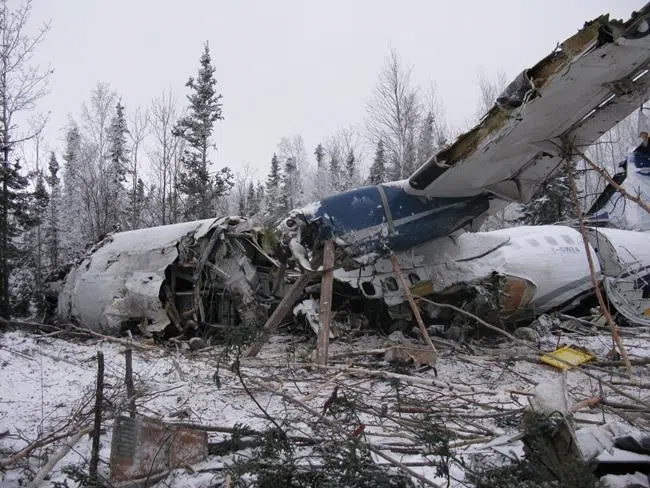
Plane not de-iced before crash near remote Saskatchewan community: safety board
FOND DU LAC, Sask. — Investigators say a plane that crashed near a remote northern Saskatchewan community last year had ice on it when it took off.
All 25 people on board the West Wind Aviation plane escaped the wreckage after the plane went down near the Fond du Lac airstrip soon after takeoff on Dec. 13. Nine people were seriously injured and one 19-year old man, Arson Fern Jr., later died in hospital.
The Transportation Safety Board said in an update Monday the investigation is still ongoing, but investigators have determined the plane arrived at the airport around 5:25 p.m. after encountering icing conditions.
“The anti-icing and de-icing systems were activated,” said the update. “When the de-icing and anti-icing systems were turned off, residual ice remained on portions of the aircraft.”
